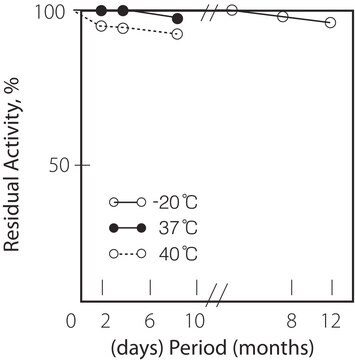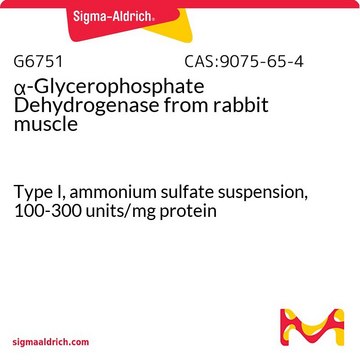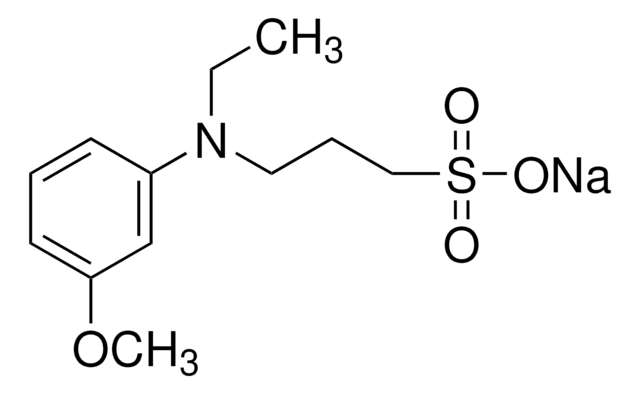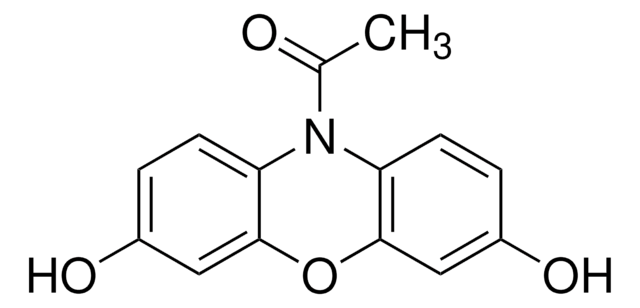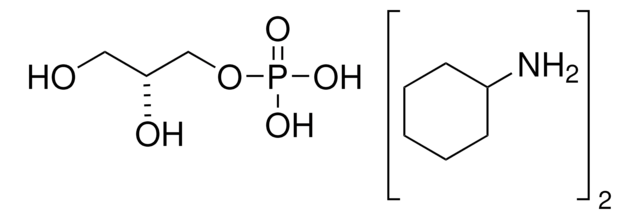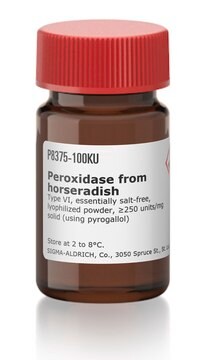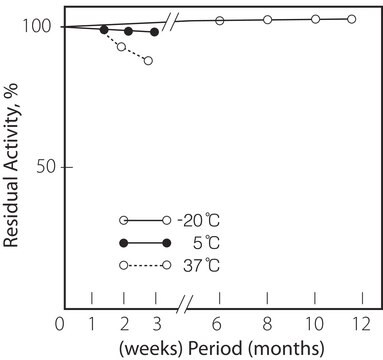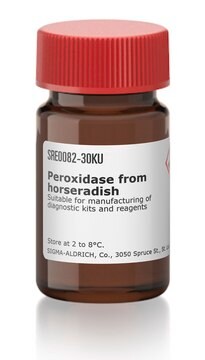Wichtige Dokumente
G9637
Glycerin-3-Phosphat-Oxidase aus Pediococcus sp.
lyophilized powder, 40-80 units/mg solid, pH 8.1
Synonym(e):
sn-Glycerol 3-phosphate:oxygen 2-oxidoreductase, L-Glycerin-3-phosphat-Oxidase
About This Item
Empfohlene Produkte
Biologische Quelle
bacterial (Pediococcus spp.)
Qualitätsniveau
Form
lyophilized powder
Spezifische Aktivität
40-80 units/mg solid, pH 8.1
Mol-Gew.
~76 kDa (gel filtration)
Lagertemp.
2-8°C
Suchen Sie nach ähnlichen Produkten? Aufrufen Leitfaden zum Produktvergleich
Allgemeine Beschreibung
Anwendung
Physikalische Eigenschaften
Michaelis constants : 3.2x10 -3M (L-α-Glycerophosphate), 6.8 x 10 -3M (D, L-form)
Inhibitors : Ionic detergents (SDS, LBS, etc.), Hg++, Ag+
Optimum pH : 8.0 - 8.5Optimum temperature : 35 - 40oC
pH Stability : pH 6.5 - 8.5 (25oC, 20hr) Thermal stability : below 40oC (pH 7.0, 15min)
Substrate specificity : The enzyme has the highest specificity for L-form of a-γlycerophosphate
Einheitendefinition
Physikalische Form
Signalwort
Danger
H-Sätze
P-Sätze
Gefahreneinstufungen
Resp. Sens. 1
Lagerklassenschlüssel
11 - Combustible Solids
WGK
WGK 3
Flammpunkt (°F)
Not applicable
Flammpunkt (°C)
Not applicable
Persönliche Schutzausrüstung
Eyeshields, Gloves, type N95 (US)
Hier finden Sie alle aktuellen Versionen:
Besitzen Sie dieses Produkt bereits?
In der Dokumentenbibliothek finden Sie die Dokumentation zu den Produkten, die Sie kürzlich erworben haben.
Kunden haben sich ebenfalls angesehen
Protokolle
Enzymatic assay of lipase type XIII from Pseudomonas sp. using a coupled enzyme system of glycerol kinase and glycerophosphate oxidase (EC 3.1.1.3)
Unser Team von Wissenschaftlern verfügt über Erfahrung in allen Forschungsbereichen einschließlich Life Science, Materialwissenschaften, chemischer Synthese, Chromatographie, Analytik und vielen mehr..
Setzen Sie sich mit dem technischen Dienst in Verbindung.

